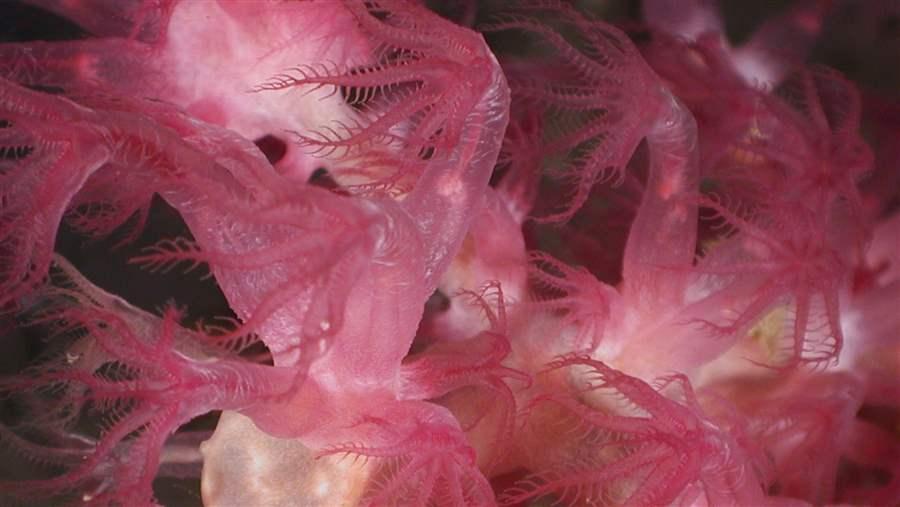Let’s Urge Fishery Council to Protect Gulf of Mexico Deep-Sea Corals
New plans could help save important, vulnerable habitat for marine life

Delicate, soft pink deep-sea octocorals live at 4,500 feet below the surface of the Gulf of Mexico.
© Aquapix/National Oceanic and Atmospheric Administration
Far below the surface of the Gulf of Mexico lie deep-sea corals—fragile, slow-growing habitat that hosts starfish, lobsters, crabs, sharks, and many fish species, including groupers and snappers. The Gulf of Mexico Fishery Management Council, which governs fishing in the Gulf’s federal waters, is considering measures to protect corals in at least 15 areas by restricting the use of certain kinds of fishing gear that could damage these vulnerable marine animals.
Over the next few weeks, the public can weigh in on this proposal, by speaking up at public meetings (see schedule here) or by submitting comments online. The council will host a webinar on the proposal March 20 (register here).
In recent years, scientists have discovered corals scattered in dense patches throughout the Gulf, spanning the edge of the continental shelf, primarily at depths of 165 to 660 feet and also more than 9,000 feet below the surface.
These sensitive corals, some of which grow slowly for thousands of years, thrive in the cold, dark depths. Some species are pure white, and others are a bright rainbow of color. Some branch out wide while others, such as certain types of stony corals, grow straight up for hundreds of feet.
Yet deep-sea corals face many threats and once damaged may take centuries or longer to recover. They are susceptible to warming waters and ocean acidification, and can be harmed by oil spills, underwater pipelines, and communications cables that are dragged along the seafloor and kick up sediment, which can suffocate marine life. Similarly, boat anchors, crab traps, and some methods of deep-water fishing, such as trawling (dragging large nets along the seafloor), may also stir sediment or break corals. Fishing lines and weights deployed on the sea bottom can harm corals, too.
Current policies safeguard only some of these fragile coral hot spots by prohibiting anchoring or the use of certain types of deep-fishing gear in these areas. It’s important to protect more of these ancient jewels.
More information about the council’s proposal is available here (PDF).









